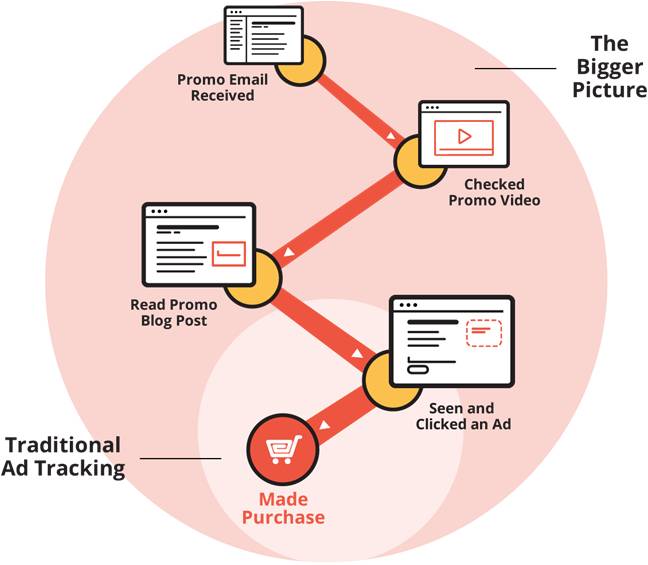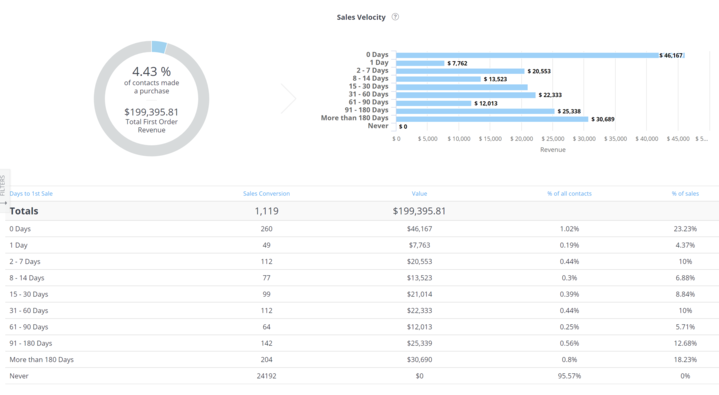“How can I tell what piece of marketing or advertising created customers and orders?
Have you ever asked this question? More importantly, have you spent time trying to answer it the hard way, by manually pulling data from multiple spreadsheets and columns within spreadsheets? Have you ever given up in sheer frustration?
If so, we have good news for you.
Wicked Reports now integrates data from Infusionsoft and WooCommerce. That means you can see which Infusionsoft campaigns brought in the leads that later became sales and how much revenue they generated.
By connecting Infusionsoft data to your WooCommerce sales platform, Wicked Reports gives you a clear view of lead performance all the way through the sales cycle.

Putting this combination to work on your marketing gives you seven extraordinary advantages that empower you to make smart, effective marketing decisions--and make more money.
First, Get a Clear Picture
First, you need a clear picture of the sales cycle. When you’re running a program in Infusionsoft, you want to know which emails actually delivered sales and revenue, not just opens and clicks. Unfortunately, connecting verifiable revenue from WooCommerce directly back to Infusionsoft usually presents a problem.
“Knowing is half the battle,” and that means knowing how well your email marketing programs are working. First you have to see what works, measured in the only metric that means something for your business—whether it brought in sales.
Second, you have to know what doesn't work so you can stop doing those things and spend that money where it will do the most good. Here are seven ways to see the important metrics in your marketing program and what to do about them.
One: The Customer Journey Over Time
When my sales cycle is longer than a week, how do I know which Infusionsoft leads led to sales in WooCommerce?
Now that Wicked Reports integrates data from both Infusionsoft and WooCommerce, you can track sales in WooCommerce back to the specific Infusionsoft marketing programs that generated them.
You start by looking at the four metrics that define the customer journey: First Click, First Optin, Last Click Before a Sale and ReOptin. That gives you a view over time.
We all like immediate gratification but not every email works immediately, especially when it’s part of a complex marketing plan that includes multiple types and dates of outreach. The last click—the one that created the sale—was just one part of a customer journey that might have taken weeks or even months. During that time the prospects might have seen online ads and videos, watched webinars, read blogs and emails and saw multiple offers.
People buy when they’re ready, when they have the budget, when a new incentive happens, or when their business planets are all aligned. Prospects, leads, and customers respond differently to your various marketing channels, offers and targeting.
You don’t know exactly when that will happen and you only learn about the sale when it shows up in WooCommerce. When you make decisions based on short-term data, however, you can easily miss the emails that take time to sink in and the offers with a longer shelf life.
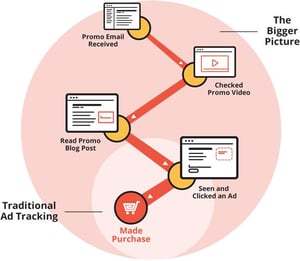 When you get a clear picture of the entire customer journey over time you can see:
When you get a clear picture of the entire customer journey over time you can see:
- What campaigns caused the customer to optin
- Which offers caused the customer to purchase
- Measure which programs made money
- Analyze messages and offers
- Leverage revenue from your best customers by finding others just like them.
If you are blind to what happened along the way, you won’t understand the real revenue drivers. If you can’t find the correct attribution from among multiple reports sent by the different channels, you can’t focus your efforts accurately.
Think long-term results—analyze the sales cycle over time—and you’ll have a more accurate picture of how your email marketing is working. You will know not only if your marketing is leading to revenue but why and when it is working.
Two: Which Leads Converted
Now that you know what’s happening in the sales cycle, you can scale marketing programs consistently and with confidence. But how long is that sales cycle? Once again, time becomes an important metric.
You need to know how long it took prospects to go from opting in to an Infusionsoft campaign to making that first purchase in WooCommerce. This applies to new customers as well as to your highest long-term-value customers—and those numbers might well differ.
Why is that important?
Because once you know the length of the sales cycle for the customers that spend the most, you can plan for it and maximize the impact. You can wait for success to happen rather making assumptions based on last clicks or immediate conversions.
Knowing how long it takes to go from first optin to last click lets you invest your resources more efficiently. Instead of blasting out more messages to try and get a response, or changing offers in midstream, you can put the money into other programs and wait for those long-term-value customers to deliver the goods.
Three: Find Your High-Value Customers
Your highest-value customers often are subscriptions or recurring purchases. They may make high- ticket purchases over the phone.
If you rely on pixels, you will miss these insanely valuable customers in your tracking system. Pixels have become too limited and unreliable for you to depend on.
You need data that’s accurate and trustworthy. After all, you’re betting your money and your business’s success on that information.
If you can’t see your best customers, you can’t duplicate the messages, offers, or retargeting that brought them in originally.
Four: Learn About Your Customers
You’ve got sales!
In fact, you have recurring sales from your best customers. So what do you know about them, really? The more you know, the better you can communicate with them and make offers that will appeal to them.
Ask yourself these three questions: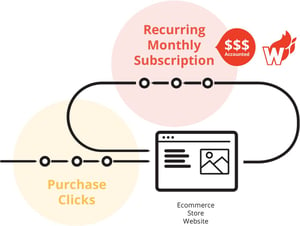
- Where did they first hear about us?
- When did they first join our list?
- What re-engaged them once they were on the list?
Tying sales in WooCommerce directly to Infusionsoft campaigns gives you the answers. Now you can start mining that data to set up programs that will reach more prospects, get more people to optin to your list and—most importantly—to purchase over and over again.
This information is gold and it will green up your revenue. The more you know the more effective—and profitable—you can be.
Five: Follow the Money
And speaking of revenue, that’s where you need to focus. Sure, getting lots of clicks and opens feels good. But no one ever got rich counting clicks and opens.
You make money only when people actually buy something from your Mail Chimp emails
It’s that simple. So why do so many systems count only their own clicks and opens?
Well, that’s simple, too: Because they can’t tie them to revenue they just measure what they can see.
Strategies are built on real data, critical analysis, marketing know-how, creativity and the willingness to risk something different. But the data comes first.
Focus on what made money for you already.
- Find more of those people.
- Use messages that you know will resonate.
- Make offers that get people to act.
- Send out emails when you know people are most likely to purchase.
- Evaluate success in the right timeframe for the channel.
Six: Know What Works
How can I avoid spray-and-pray email blasts and just do the ones that work?
If your strategy is to send out lots of emails and wait for some of them to work, you’re wasting time and money. And until you can connect leads from Infusionsoft emails to sales in WooCommerce, you will remain in the dark.
Here’s the secret to email success: Just determine which of your Infusionsoft emails worked best and do more of them for a better return.
Again, however, you need to have the basic information that tells you which are which. The combination of Infusionsoft, WooCommerce and Wicked Reports will help you make the most of your emails.
Oh, and forget about the emails that didn’t work well—you can’t afford to throw time and money away on those. Double down on the messages, formats, or offers that worked and fold the ones that didn’t.
Seven: Quantify Your Success
Never confuse creative brilliance with marketing effectiveness.
- Do you send out emails so people will read them or because you want to sell your products?
- Do you want people to love your creative content or do you want people to buy?
If you’re thinking that you want both, think about this: The two don’t always match up.
Sometimes emails with good click and open rates don’t sell much while emails that few people seemed to read actually bring in revenue over time. You need to tell one from the other.
The difference becomes obvious if you focus on the ROI of your Infusionsoft campaigns. The return on your email investment will tell you which creative was strong, which messages were effective, and which offers brought in sales.
It will also reveal as the weak ones.
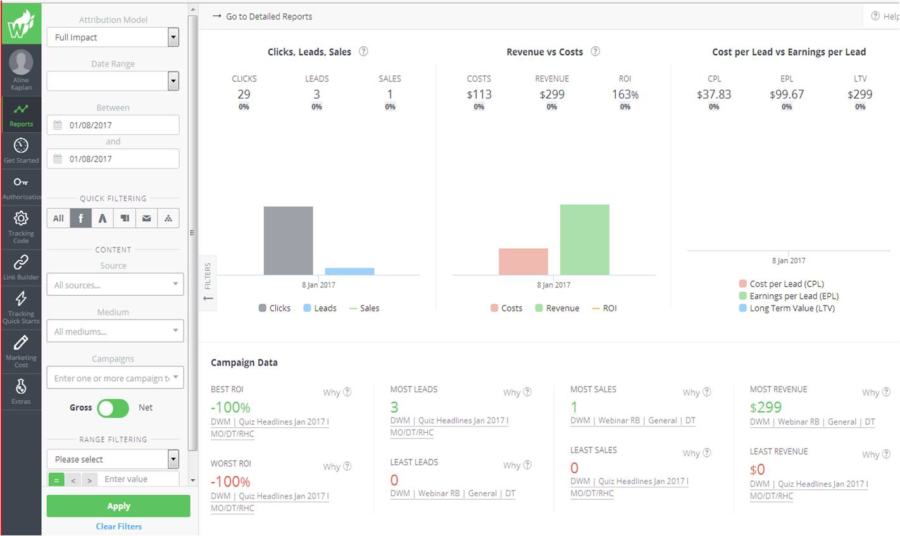
By looking at the return on your investment, you’ll see the real value of Mail Chimp email programs to your sales funnel—and know which ones to replicate.
Bottom line: You’ll make more money with what works and waste less money on what doesn’t. And that will improve your bottom line.
Infusionsoft+WooCommerce+Wicked Reports
Infusionsoft delivers the marketing campaigns. WooCommerce records the sales. And Wicked Reports connects the two data sets to show you all the data you need for better emails, better marketing and higher sales.


